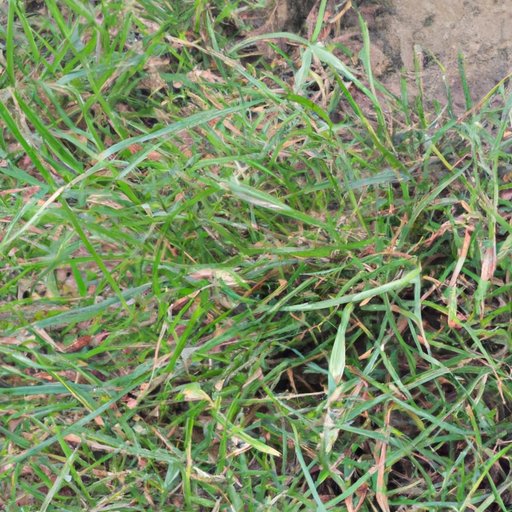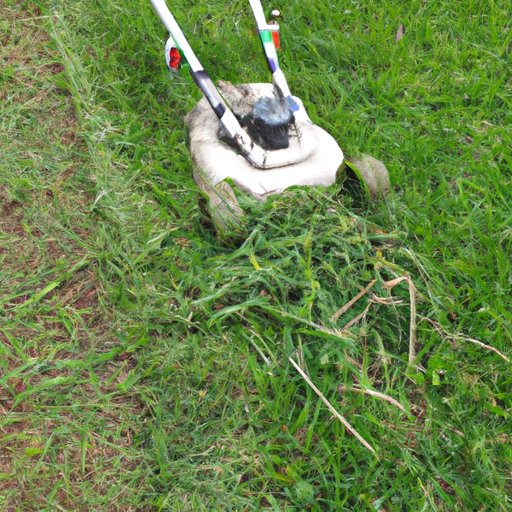
How to Get Rid of Crab Grass: Natural and Chemical Methods
Crab grass is a pesky weed that can quickly take over your lawn or garden, leaving a patchy and unsightly landscape. This fast-growing weed spreads easily, making it a nuisance for lawn and garden owners. However, there are several effective methods for getting rid of crab grass and preventing its growth in the future. In this article, we will explore the most popular natural and chemical methods for eliminating crab grass so that you can achieve a crab-grass-free landscape.
Natural Remedies for Eliminating Crab Grass
One of the most effective ways to kill crab grass naturally is by using vinegar, baking soda, or boiling water, which can act as a natural herbicide. Baking soda is a known alkalizing agent and can easily dehydrate crab grass. Whereas, vinegar and boiling water remedies both work as natural weed killers that dry out and kill crab grass.
To use vinegar as a natural remedy, fill a spray bottle with undiluted vinegar and spray it directly on the crab grass. Reapply the vinegar every few days until the crab grass dies. Alternatively, you can mix vinegar with dish soap for more effective results.
When it comes to baking soda, sprinkle the powder on the affected area of your lawn and then mist it with water to help it settle into the soil. To use boiling water, simply pour the hot water over the crab grass, being careful not to pour it on surrounding plants or soil.
Natural remedies for killing crab grass are safe, cheap, and environmentally friendly. They are a fantastic alternative to commercial herbicides, which contain harmful chemicals that can endanger other plants and wildlife in the area.
Chemical Herbicides for Crab Grass Control
Chemical herbicides represent another effective means of killing crab grass. Glyphosate is a commonly used herbicide that works by blocking an enzyme vital to plant growth. This eventually leads to the death of the crab grass.
While chemical herbicides can offer quick results, they come with some potential drawbacks. Firstly, herbicides can harm other plants if not applied correctly. Therefore, it is vital to apply the herbicide sparingly only on affected areas. Additionally, herbicides can harm the environment if misused or over-applied. Therefore, garden and lawn owners should follow instructions provided on the packaging and wear protective clothing when applying any herbicides.
Hand Pulling as a Traditional Method for Getting Rid of Crab Grass
An old-fashioned yet effective method of getting rid of crab grass is by digging it out by hand. This method is best for small areas of crab grass. The biggest disadvantage of hand weeding is that it can be time-consuming and tedious, but it offers the advantage of being eco-friendly, as it requires no chemicals.
To effectively hand pull crab grass, start by wetting the soil. Then, dig around the crab grass using a trowel or garden fork. Try to make sure that you remove the weed roots entirely to prevent regrowth.

Using Mowing to Weaken Crab Grass
Regular mowing can help weaken crab grass growth. Mowing benefits general lawn and garden maintenance by making grass shoots stronger and preventing further growth. The key is to ensure that you mow on a regular basis to prevent the crabgrass from producing seedheads. If these are allowed to mature, crabgrass seeds will fall to the ground, waiting to germinate in the next season.
For optimal crab grass control, aim to mow your lawn or garden regularly at a height of no more than two modules. This will weaken the crab grass while encouraging healthy growth for other desired plants.
Mulching to Prevent Crab Grass Growth
Mulching provides many benefits to plants, and it is also useful for controlling crab grass. Mulch acts as a natural barrier, preventing crab grass from receiving sunlight and therefore preventing germination.
Using organic mulch, such as wood chips, compost, or leaves, can be an effective way to combat crab grass growth without the need for chemical herbicides. These types of mulch also increase the nutrient level of your soil and improve moisture retention.
Pre-emergent Herbicides for Crab Grass Prevention
Pre-emergent herbicides can be used to prevent crab grass germination. Pre-emergent herbicides work by creating a barrier in the soil that inhibits the growth and development of crab grass roots. These herbicides are primarily used at the start of the growing season when the soil temperature is between 50 to 55 degrees Fahrenheit.
For the best results, apply the pre-emergent herbicide before any crab grass has a chance to germinate. Apply it evenly to your lawn or garden, taking care to follow the instructions provided carefully.
Reseeding Your Lawn to Prevent Crab Grass
Finally, the best way to ensure a lawn and garden free of crab grass is to seed healthy turfgrasses that can outcompete the weed. A healthy lawn is thicker, which leaves fewer opportunities for the crab grass to take hold and spread.
To ensure optimal lawn health and ensure the prevention of crab grass growth, re-seed your lawn annually. While reseeding has many benefits, it also takes time and effort; however, it can help to maintain a healthy and green lawn while also preventing crab grass outgrowth.
Conclusion
Crab grass eradication is a crucial part of maintaining a beautiful lawn and garden. Natural methods such as vinegar, boiling water, and baking soda are safe and environmentally friendly, while chemical herbicides can offer a quick fix. Hand pulling is an effective yet time-consuming method, while mulching, pre-emergent herbicides, and regular lawn re-seeding are all good methods to prevent crab grass growth.
The best approach is to stick to the method that works best for you and your lawn or garden. Whatever method you choose, be sure to always follow the instructions provided carefully and be mindful of potential harm to other plants and wildlife. A crabgrass-free garden is an attractive and vibrant space for your enjoyment.




